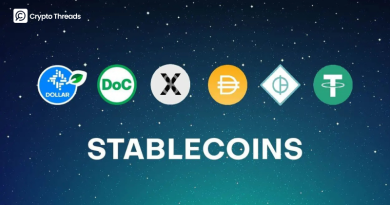What is SocialFi?
Understanding SocialFi Basics
SocialFi, short for ‘social’ and ‘finance,’ represents the combination of social media and blockchain technology. The goal of SocialFi is to reward users when they post high-quality content and allow them to have greater control over their personal data.
SocialFi platforms also strive to maintain the high transaction processing capabilities necessary for social interactions while leveraging blockchain technology to distribute value more fairly among all participants in the ecosystem.
One of the primary mechanisms for monetization is through cryptocurrency, which allows you to receive immediate rewards when you have positive interactions on the network. Additionally, non-fungible tokens (NFTs) play a crucial role in identity management and digital ownership, helping creators build a verifiable online reputation and protect their intellectual property rights.
Decentralized autonomous organizations (DAOs) form the foundation of many SocialFi platforms. With their open and collaborative nature, DAOs avoid many of the drawbacks of traditional web2 social media companies, where only a few entities control and benefit from user-generated content. In fact, SocialFi emerged as a response to growing concerns about this centralization, including the exploitation of users as products, arbitrary content bans, and the challenges artists face when trying to protect ownership of their digital creations.
The Role of Cryptocurrency
The integration of cryptocurrency within SocialFi platforms transforms how users interact and transact in the social media landscape.
To make this clearer, think of cryptocurrency as special digital coins that facilitate value exchange between users. Instead of waiting for a company to pay you through banks (which could take several days), you can receive money instantly when someone likes your content or gives you a tip. By incorporating cryptocurrency, SocialFi platforms enable content creators and influencers to receive direct and immediate compensation without relying on intermediaries.
Furthermore, cryptocurrency’s role extends beyond simple transactions to represent a broader system of incentives and governance. Social tokens, a specific type of cryptocurrency, can be personalized for individual creators or serve as the native currency within SocialFi applications. These tokens build a participatory economy where users have a stake in the platform’s growth and can influence its direction through decentralized governance mechanisms.
These tokens also enable fair distribution of rewards, aligning the interests of all stakeholders and fostering a community-driven approach to the platform’s development roadmap.
Real-World Examples of SocialFi Platforms
Launched in August 2023, Friend.Tech is a blockchain-based social finance platform that uses “keys” for community members to access an individual’s channel. The value of these keys increases as that person becomes more popular. To understand this simply, imagine buying a “VIP ticket” to join a private chat group with a celebrity, and the more people want to buy this ticket, the higher its price becomes. The platform is built on Base, an Ethereum Layer 2 developed by the cryptocurrency exchange Coinbase.
Farcaster, built on Optimism, requires users to pay five dollars for a limited number of posts to eliminate bot activity on the protocol. This is similar to paying a membership fee to ensure that only people who are genuinely interested participate, thereby improving the quality of conversations. To enhance user engagement, Farcaster also launched “Frames,” which are interactive applications built on the platform.
These examples demonstrate how SocialFi is gradually turning the idea of “earning money from social media activities” into reality, opening new opportunities for both content creators and ordinary users.



